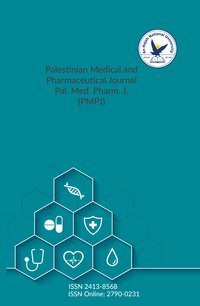Formulation and evaluation of microspheres of anti-inflammatory drug diacerein pre-pared by ionotropic gelation method
Authors:
Article info
2022-04-08
2022-07-07
81 - 94
Keywords
- Microsphere
- Sodium alginate
- Chitosan
- Diacerein
Abstract
The context of this research was to reduce the untoward effects of diacerein by preparing a microsphere formulation of the same. The ionotropic gelation method was adopted to pre-pare diacerein microspheres. This method involves the interaction of two ionic components under certain conditions. Among these two ionic components, at least one component must be a polymer. Simple interaction between ionic polymer with oppositely charged ion leads to the formation of microspheres. In this process, sodium alginate and Chitosan were used as polymers, whereas for the crosslinking process, calcium chloride was used. The prepared formulations of diacerein displayed mean particle size ranging from 106-542 µm, while the percentage yield ranged from 49-82. An increased concentration of calcium chloride and so-dium alginate increases the particle size. However, an increased chitosan concentration was found to increase the drug entrapment efficiency of the microspheres. Further, phosphate buffer media (pH 6.8) in the USP paddle type dissolution apparatus were used for the per-centage drug release study. Results showed that increased chitosan concentration slows the release of drugs from microspheres. We noted that the B3 formulation, which contains sodi-um alginate: Chitosan (1:3), showed the lowermost rate of drug release. Besides, SEM studies of the same formulation (B3) revealed that microspheres have spherical shapes with rough surfaces. It was observed that the B3 formulation showed a significant result in formulation evaluation studies; hence, it may be further considered an optimized formulation for preclini-cal evaluation.
Roy, T., & Chatterjee, T. K. (2023). Formulation and evaluation of microspheres of anti-inflammatory drug diacerein pre-pared by ionotropic gelation method. Palestinian Medical and Pharmaceutical Journal, 8(1), 81–94. https://doi.org/10.59049/2790-0231.1145
[1]T. Roy and T. K. Chatterjee, “Formulation and evaluation of microspheres of anti-inflammatory drug diacerein pre-pared by ionotropic gelation method,” Palestinian Medical and Pharmaceutical Journal, vol. 8, no. 1, pp. 81–94, Apr. 2023, doi: 10.59049/2790-0231.1145.
Roy, Tathagata, and Tapan Kumar Chatterjee. “Formulation and Evaluation of Microspheres of Anti-Inflammatory Drug Diacerein Pre-Pared by Ionotropic Gelation Method.” Palestinian Medical and Pharmaceutical Journal, vol. 8, no. 1, Apr. 2023, pp. 81–94. Crossref, https://doi.org/10.59049/2790-0231.1145.
1.Roy T, Chatterjee TK. Formulation and evaluation of microspheres of anti-inflammatory drug diacerein pre-pared by ionotropic gelation method. Palestinian Medical and Pharmaceutical Journal [Internet]. 2023 Apr;8(1):81–94. Available from: http://dx.doi.org/10.59049/2790-0231.1145
Roy, Tathagata, and Tapan Kumar Chatterjee. “Formulation and Evaluation of Microspheres of Anti-Inflammatory Drug Diacerein Pre-Pared by Ionotropic Gelation Method.” Palestinian Medical and Pharmaceutical Journal 8, no. 1 (April 2023): 81–94. https://doi.org/10.59049/2790-0231.1145.
Formulation and evaluation of microspheres of anti-inflammatory drug diacerein pre-pared by ionotropic gelation method
المؤلفون:
معلومات المقال
2022-04-08
2022-07-07
81 - 94
الكلمات الإفتتاحية
- Microsphere
- Sodium alginate
- Chitosan
- Diacerein
الملخص
The context of this research was to reduce the untoward effects of diacerein by preparing a microsphere formulation of the same. The ionotropic gelation method was adopted to pre-pare diacerein microspheres. This method involves the interaction of two ionic components under certain conditions. Among these two ionic components, at least one component must be a polymer. Simple interaction between ionic polymer with oppositely charged ion leads to the formation of microspheres. In this process, sodium alginate and Chitosan were used as polymers, whereas for the crosslinking process, calcium chloride was used. The prepared formulations of diacerein displayed mean particle size ranging from 106-542 µm, while the percentage yield ranged from 49-82. An increased concentration of calcium chloride and so-dium alginate increases the particle size. However, an increased chitosan concentration was found to increase the drug entrapment efficiency of the microspheres. Further, phosphate buffer media (pH 6.8) in the USP paddle type dissolution apparatus were used for the per-centage drug release study. Results showed that increased chitosan concentration slows the release of drugs from microspheres. We noted that the B3 formulation, which contains sodi-um alginate: Chitosan (1:3), showed the lowermost rate of drug release. Besides, SEM studies of the same formulation (B3) revealed that microspheres have spherical shapes with rough surfaces. It was observed that the B3 formulation showed a significant result in formulation evaluation studies; hence, it may be further considered an optimized formulation for preclini-cal evaluation.
Roy, T., & Chatterjee, T. K. (2023). Formulation and evaluation of microspheres of anti-inflammatory drug diacerein pre-pared by ionotropic gelation method. Palestinian Medical and Pharmaceutical Journal, 8(1), 81–94. https://doi.org/10.59049/2790-0231.1145
[1]T. Roy and T. K. Chatterjee, “Formulation and evaluation of microspheres of anti-inflammatory drug diacerein pre-pared by ionotropic gelation method,” Palestinian Medical and Pharmaceutical Journal, vol. 8, no. 1, pp. 81–94, Apr. 2023, doi: 10.59049/2790-0231.1145.
Roy, Tathagata, and Tapan Kumar Chatterjee. “Formulation and Evaluation of Microspheres of Anti-Inflammatory Drug Diacerein Pre-Pared by Ionotropic Gelation Method.” Palestinian Medical and Pharmaceutical Journal, vol. 8, no. 1, Apr. 2023, pp. 81–94. Crossref, https://doi.org/10.59049/2790-0231.1145.
1.Roy T, Chatterjee TK. Formulation and evaluation of microspheres of anti-inflammatory drug diacerein pre-pared by ionotropic gelation method. Palestinian Medical and Pharmaceutical Journal [Internet]. 2023 Apr;8(1):81–94. Available from: http://dx.doi.org/10.59049/2790-0231.1145
Roy, Tathagata, and Tapan Kumar Chatterjee. “Formulation and Evaluation of Microspheres of Anti-Inflammatory Drug Diacerein Pre-Pared by Ionotropic Gelation Method.” Palestinian Medical and Pharmaceutical Journal 8, no. 1 (April 2023): 81–94. https://doi.org/10.59049/2790-0231.1145.

Since 2022
Cite Score (Scopus): 0.8
Time to First Decision: 3 Days
Submission to Acceptance: 45 Days
Acceptance to Publication: 64 Days
Acceptance Rate: 17%
Why should you
Publish With Us?
An-Najah National University
Nablus, Palestine
Nablus, Palestine
- P.O. Box
- 7, 707
- Fax
- (970)(9)2345982
- Tel.
- (970)(9)2345560
- (970)(9)2345113/5/6/7-Ext. 2628
- [email protected]
- EIC
- Prof. Waleed Sweileh
The Palestinian Medical and Pharmaceutical Journal (Pal. Med. Pharm. J.) © 2024 by An-Najah University, Nablus, Palestine is licensed under CC BY-NC 4.0
News and Views
